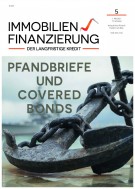Sie befinden sich hier: Home › Immobilien & Finanzierung › Themenschwerpunkte › Aufsätze › THE DANISH COVERED BOND MARKET IN TIMES OF COVID-19
Aufsätze
03.05.2021
PFANDBRIEFE UND COVERED BONDS
THE DANISH COVERED BOND MARKET IN TIMES OF COVID-19

Jakob Skinhøj, Foto: privat

Dieser Artikel ist Teil unseres Online-Abo Angebots.
Immobilien & Finanzierung, Ausgabe vom 03.05.2021, Seite 228
Aufsätze
4,50 €
1970